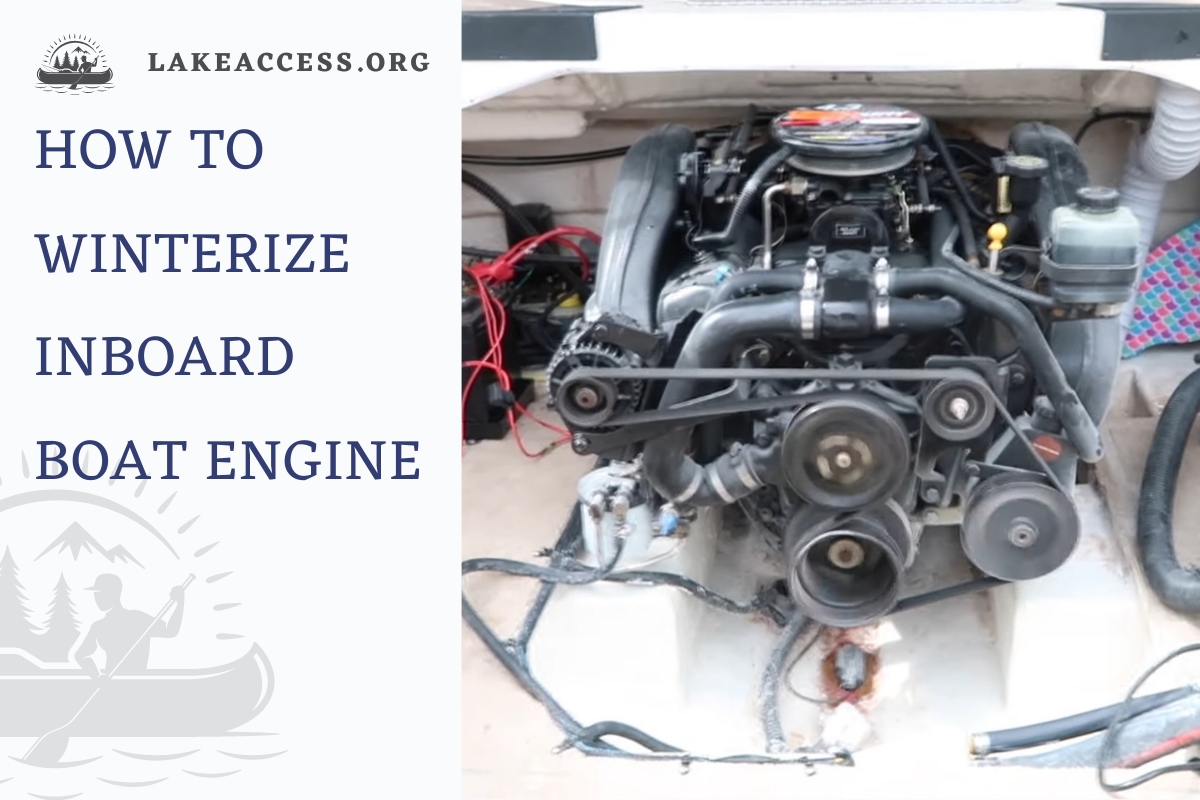Winterizing a boat engine is not a difficult task. However, it is very important that you know how to do it properly in order to protect your boat engine from freezing and other damage during the winter season.
An inboard boat engine is usually more expensive and complicated than an outboard one. Therefore, it needs extra care to keep it running smoothly all year round. Here I have written a step-by-step guide on how to winterize your inboard boat engine.
What You Will Need
Antifreeze—50% antifreeze/50% distilled water mix.
Fresh water hose—to flush the cooling system with fresh water.
Bilge pump—to remove any standing water from the bilges before the boat is put away for the winter and to ensure that all drains are clear and working.
Fuel filter—to prevent water from entering the fuel system, check to ensure that the fuel tank vents are clear of debris and ice, as this can clog the fuel filter.
Engine oil—to ensure that the engine is protected from the cold, change to an exceptional winter grade of oil if temperatures are expected to go below freezing for extended periods.
Fuel Stabilize—to ensure that fuel does not gum up and clog the fuel system.
Check all hoses and belts for wear or damage. Replace as necessary.
Test the engine and all electrical systems to ensure they are in good working order.
Winterizing your boat is not a one-time job. It should be done every year, whether you plan to keep the boat in storage.
Change the Engine’s Oil and Replace Oil Filter
First, check the engine oil. If it’s dirty, then replace it. After that, make sure you use the type of oil recommended by the manufacturer.
You should change your engine’s oil and replace the oil filter every 50 hours or at least once a year. Warm oil makes draining and changing more straightforward, so I suggest doing this while your engine is already warm from running. It’s essential to allow the engine to reach average temperatures before performing the oil change.
When you’re ready to do the job, gather up these supplies:
- A bucket or oil pan to catch the used oil.
- A funnel to help pour new oil into the engine.
- Replacement filter (ensure you get the right one for your boat).
- New o-ring for the filter (usually included with filter).
- Adjustable wrench.
- Torque wrench.
- Penetrating lubricant.
First, remove the dipstick and locate the drain plug on the bottom of the crankcase. Some engines have a petcock valve instead of a drain plug – if that’s your case, turn off the petcock valve before proceeding.
Place a container under the crankcase and loosen the drain plug using an adjustable wrench – be careful not to drop it in a container! Once all old oil has drained out, reinstall the drain plug snugly (but don’t over-tighten).
Now go ahead and remove the old filter using an adjustable wrench – again, be careful not to drop it in the container. If you have an oil filter wrench, that will work better, but be careful not to damage the new filter.
Apply a thin coat of penetrating lubricant to the O-ring on the new filter, then screw it onto the engine by hand until it’s snug.
Now carefully pour the new oil into the engine; finally, use a torque wrench to tighten the filter until the specified torque is reached – this usually takes about 25-30 ft./lbs of torque. Next, reinstall the dipstick and start the engine – check for leaks.
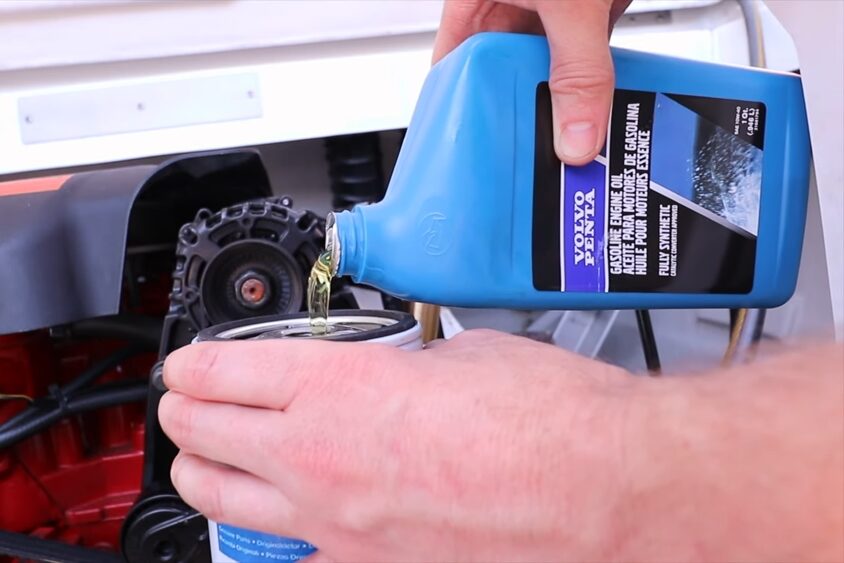
Fill the engine with Fuel and Add a Fuel Stabilizer
It’s essential to take the necessary steps to winterize your inboard boat motor before the cold weather hits. One of the most important things you can do is to fill up your boat’s tank with gasoline before winter sets in, as this will also help minimize air getting into the tank and causing problems.
After that, Make sure to add a fuel stabilizer or conditioner to your gas tank. This refers to a substance that prevents changes in an engine’s fuel and air mixture. A fuel stabilizer will help prevent fuel oxidation and moisture in the tank, which can cause severe engine damage in cold weather. In addition, a fuel stabilizer prevents fuel such as gasoline from going bad when the engine is not in use for as long as 12 months.
STA-BIL Storage Fuel Stabilizer is a good option for this, and it’s readily available at any local auto parts store and works perfectly. In addition, STA-BIL Storage Fuel Stabilizer claims to keep the fuel fresh for 24 months, so it’s perfect for long-term use.
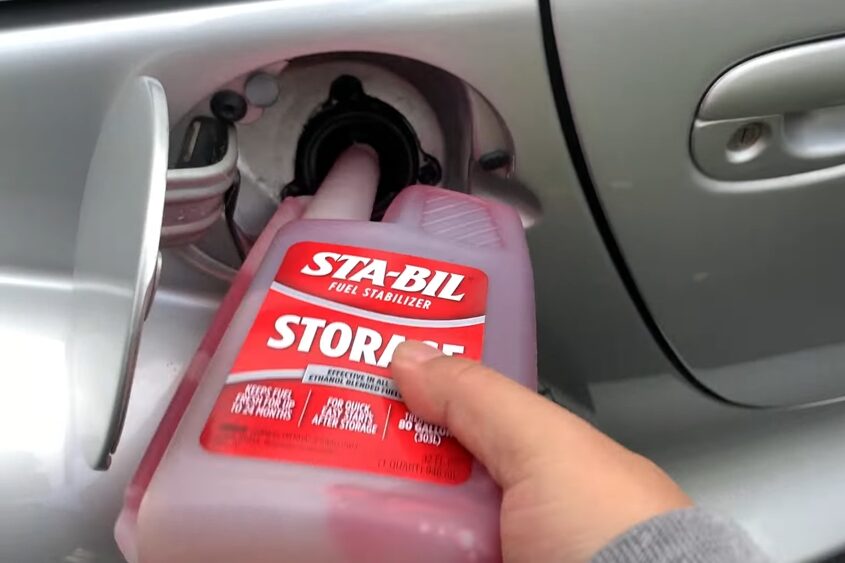
No products found.
Add Antifreeze
The third and most important step is adding antifreeze to the cooling system. This will help prevent water from freezing and causing cracks or other damage to the engine. The antifreeze should be mixed with water to a 50/50 ratio and poured into the system as described above.
Splash Antifreeze coolant is an excellent option when it comes to antifreeze coolants.
To add antifreeze, you’ll need first to drain the coolant from your engine compartment. You can do this by opening the seacock and letting the water out.
Once it’s drained, close the seacock and re-position the raw water hose’s tip into a bucket of antifreeze. After that, please turn on your engine, let it run for a while, and watch closely to ensure the system siphons off enough antifreeze. Stop when it’s almost empty, then pour more non-toxic antifreeze into another bucket until you’ve reached capacity.
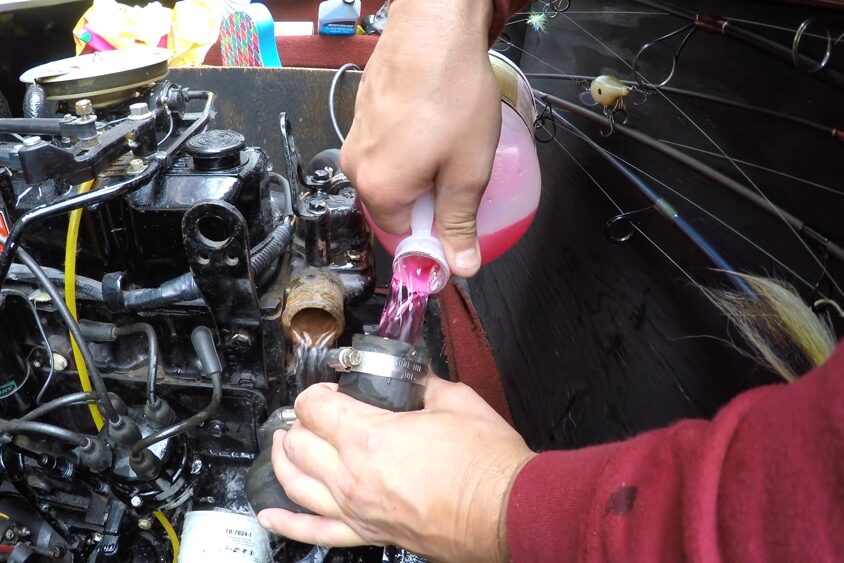
No products found.
Spray Fogging Oil
The Final step in winterizing your inboard boat engine is spraying fogging oil into the engine. This will help protect it from corrosion and rust. You can buy fogging oil at any marine supply store or boat dealer.
STA-BIL (22001) Fogging Oil is an excellent option for this. You can find it on Amazon for a price of $9.29(at the moment). It comes in a spray bottle, so it’s easy to apply.
To apply fogging oil, you want to start by cleaning the engine. This will help ensure that the oil penetrates all areas of your engine and prevents corrosion. Next, spray fogging oil on a clean rag, then wipe down the engine.
Fogging oil must be sprayed generously onto all carburetor parts before turning off the engine. White smoke appears after waiting 30 seconds or until it’s dried out completely. Make sure to cover every engine part, including the cylinders and spark plugs.
Once you’re done fogging, start up your engine and let it run for a few minutes. This will help distribute the fogging oil throughout the entire system.
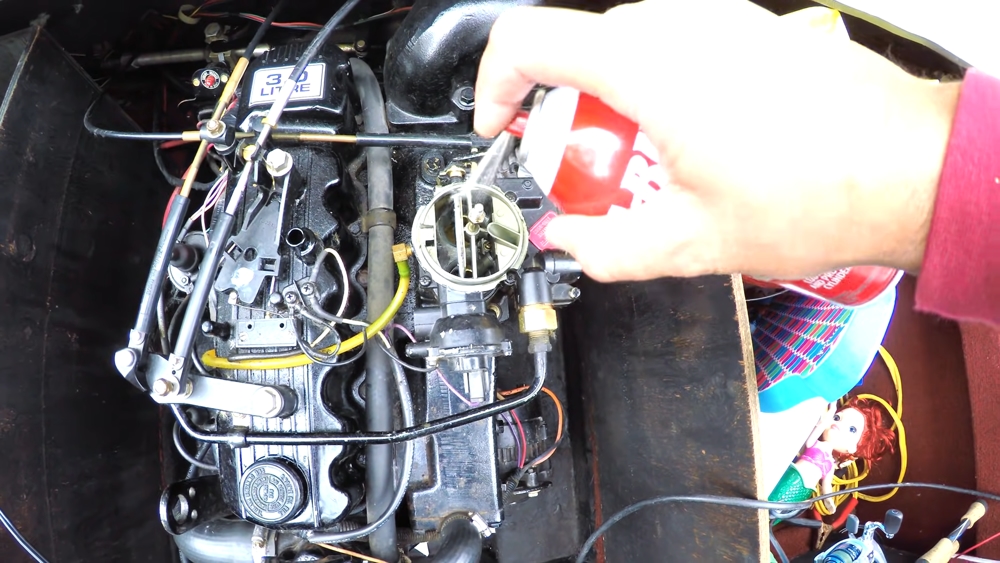
No products found.
FAQs
How much does it cost to winterize an inboard boat engine?
The cost varies depending on the size of the boat and where you live.
If you have a small boat with an outboard, you could probably do it for under $100. If you have a giant ship or inboard engine, the cost will be higher – but still under $200.
If you have an older boat, replacing the filter and oil is probably a good idea – this will add another $50 to your bill.
How long does winterizing a boat engine take?
It takes about an hour to winterize a small outboard engine. An inboard engine will take longer, perhaps 3 hours or so. If you’re a novice, it’s best to have someone with experience do the job for you. He’ll know where all the hoses and wires that need disconnecting. It’s not a difficult job, but there are many parts to disconnect and reconnect.
What kind of antifreeze do you use for winterizing a boat motor?
A few different types of antifreeze can be used in a boat motor, and the captain should be consulted before any decisions are made. One popular type is West Marine’s premium “virgin” antifreeze, which contains corrosion inhibitors to protect the engine and cooling system. In addition, this product is made from propylene glycol instead of ethylene glycol, making it less toxic if spilled.
Another option is to use antifreeze with acetone or ethylene; however, this can harm the environment if not disposed of properly. It is easier to use West Marine’s propylene glycol-based antifreeze than an alternative with acetone or ethylene.
Why do gas tanks need filling during the winter season?
There are a few reasons why you would want to fill your tank with gas over winter. The biggest reason is that it helps prevent moisture and condensation from being introduced into the tank, which can cause all sorts of problems with your engine. It also prevents bad smells from coming from the tank and helps keep the fuel lines and carburetors clear of water buildup.
In addition, fuel stabilizers help prevent fuel build-up, which can lead to issues with engines and other equipment. Stabilizers prevent water from entering the engine’s fuel lines and carburetors. They also help break down any built-up gunk or grime in the system, which can keep everything running smoothly throughout winter.
And finally, adding a fuel stabilizer always makes for a happy ending–you won’t have to worry about any nasty surprises when you fire up your boat next spring!
Is it safe to leave antifreeze in the boat engine for an extended period?
I have heard conflicting information. One person says it is unsafe to leave antifreeze in the engine for an extended period because it will eat away at the seals and gaskets.
Another person says that it is okay to leave antifreeze in the engine for an extended period because it will not eat away at anything inside the engine. You can even run the engine with antifreeze for an extended period.
So I did some research on my own and found that, in most cases, it’s not a problem to leave the antifreeze in the boat engine for extended periods.
What Happens in I don’t winterize my boat?
The engine must be winterized because it is not designed for the cold.
When you leave water in the boat and freeze it, ice will form around the water pump and other vital components. When the ice expands, it will crack and damage these components. Likewise, if you leave water in the engine for an extended period, corrosion can build up on vital parts like the water pump.
When the engine starts, this corrosion can flake off and get into the cooling system or your oil. This will cause premature wear on vital components in your boat. Hence, you must always winterize the engine if you plan to store your boat in a cold climate.

